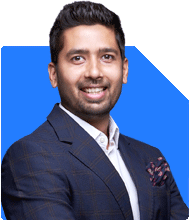Ramalingam Kalirajan |10881 Answers |Ask -Follow
Mutual Funds, Financial Planning Expert - Answered on Jan 16, 2025
He has an MBA in finance from the University of Madras and is a certified financial planner.
He is the director and chief financial planner at Holistic Investment, a Chennai-based firm that offers financial planning and wealth management advice.... more

Hi Sir, I have following MF in my portfolio HDFC mid-cap Opportunity fund - 16.39lac ICICI Pru Large&Mid cap Fund - 9.96lac Nippon India large Cap fund - 10.15lac Nippon india small cap fund - 9.4lac ICICI pru Value discovery fund -9.35lac JM Flexicap fund - 7.39lac ICICI pru infrastructure fund 7.29lac HDFC large and mid cap fund - 6.29lac SBI long term equity fund - 4lac Motilal oswal midcap fund-25k In total 83lac. Please advise whether I can generate 75k per month income from the investment. Thank you in advance
1. Evaluate Your Existing Portfolio
Your portfolio is well-diversified across large-cap, mid-cap, small-cap, and sectoral funds.
Diversification is essential, but your current portfolio may be over-diversified.
Holding too many funds in similar categories reduces overall efficiency.
Sectoral funds like infrastructure are high-risk and not ideal for regular income.
2. Challenges in Achieving Rs 75,000 Monthly Income
Relying entirely on mutual funds for income can pose challenges.
Equity funds are volatile and may not provide consistent monthly returns.
Withdrawals during a market dip may reduce your principal amount.
Debt funds offer stability but may not meet the required income target alone.
3. Steps to Optimise Your Portfolio
Rebalancing your portfolio can make it more aligned with your goals.
Retain funds with consistent performance over 5+ years.
Exit underperforming funds or those overlapping with others.
Shift sectoral funds like infrastructure into diversified equity or balanced funds.
4. Create a Monthly Income Plan
A Systematic Withdrawal Plan (SWP) can provide regular income.
Use equity funds for long-term growth but withdraw conservatively.
Allocate part of your portfolio to balanced hybrid funds for stable returns.
Invest in high-quality debt funds for predictable income.
5. Risk Management Strategies
Your income strategy must focus on capital preservation.
Equity exposure should not exceed 50% of your portfolio.
Allocate around 30–40% to debt funds for stability.
Keep 10–15% in liquid funds for emergencies.
6. Importance of Tax Planning
Consider tax implications when withdrawing from mutual funds.
LTCG on equity funds above Rs 1.25 lakh is taxed at 12.5%.
STCG is taxed at 20%.
Debt fund gains are taxed as per your income tax slab.
7. Reduce Over-Diversification
Streamline your portfolio to avoid duplication and improve returns.
Retain one large-cap fund with strong long-term performance.
Keep one mid-cap and one small-cap fund with consistent growth.
Avoid holding multiple funds in the same category.
8. Alternative Income Sources
Mutual funds alone may not consistently generate Rs 75,000 per month.
Explore fixed-income instruments like senior citizen savings schemes if eligible.
Consider safe corporate bonds or government-backed securities for stability.
9. Seek Expert Guidance
A Certified Financial Planner can optimise your portfolio effectively.
Assess fund performance and recommend replacements if needed.
Create a customised income plan aligned with your financial goals.
Ensure the strategy balances growth, income, and risk.
Final Insights
Generating Rs 75,000 per month is challenging but achievable with proper planning.
Streamline your portfolio and reduce overlap in fund categories.
Use SWP for regular income while maintaining long-term growth potential.
Consult a Certified Financial Planner for a sustainable income strategy.
Best Regards,
K. Ramalingam, MBA, CFP,
Chief Financial Planner,
www.holisticinvestment.in
https://www.youtube.com/@HolisticInvestment
You may like to see similar questions and answers below
Kirtan A Shah | Answer |Ask -Follow
MF Expert, Financial Planner - Answered on Sep 02, 2023
Vivek Lala |323 Answers |Ask -Follow
Tax, MF Expert - Answered on Mar 09, 2024
Nitin Narkhede | Answer |Ask -Follow
MF, PF Expert - Answered on Jan 16, 2025
Dr Dipankar Dutta |1841 Answers |Ask -Follow
Tech Careers and Skill Development Expert - Answered on Dec 14, 2025
Nayagam P P |10854 Answers |Ask -Follow
Career Counsellor - Answered on Dec 14, 2025
Radheshyam Zanwar |6744 Answers |Ask -Follow
MHT-CET, IIT-JEE, NEET-UG Expert - Answered on Dec 14, 2025
Radheshyam Zanwar |6744 Answers |Ask -Follow
MHT-CET, IIT-JEE, NEET-UG Expert - Answered on Dec 14, 2025
Dr Dipankar Dutta |1841 Answers |Ask -Follow
Tech Careers and Skill Development Expert - Answered on Dec 14, 2025
Dr Dipankar Dutta |1841 Answers |Ask -Follow
Tech Careers and Skill Development Expert - Answered on Dec 13, 2025
Dr Dipankar Dutta |1841 Answers |Ask -Follow
Tech Careers and Skill Development Expert - Answered on Dec 13, 2025
Mayank Chandel |2575 Answers |Ask -Follow
IIT-JEE, NEET-UG, SAT, CLAT, CA, CS Exam Expert - Answered on Dec 13, 2025
Radheshyam Zanwar |6744 Answers |Ask -Follow
MHT-CET, IIT-JEE, NEET-UG Expert - Answered on Dec 13, 2025
Mayank Chandel |2575 Answers |Ask -Follow
IIT-JEE, NEET-UG, SAT, CLAT, CA, CS Exam Expert - Answered on Dec 13, 2025

























